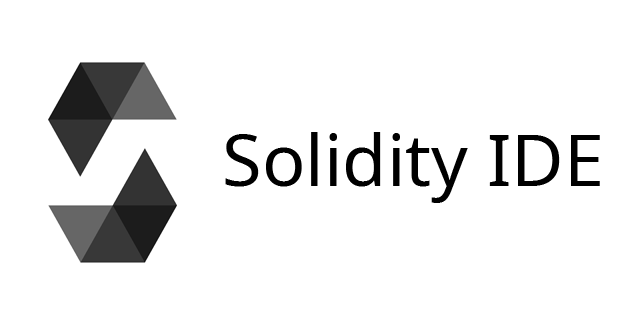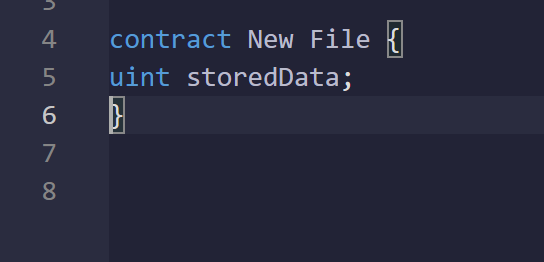Smart contracts are a new way of creating deals with people in the online space. In the same way smartphones and smart watches took over, writing smart contracts gained prominence the online space.
With the introduction of Ethereum in 2015 and the new concept of decentralized apps (called dApps nowadays), the idea of smart contract code was put forth to the world. Although they were not created then, developing smart contracts really took off with Ethererum’s success.
In this article, we’re going to not only explain to you what is the concept of smart contracts, how you can own smart contracts, etc., but we will also tell you how to deploy smart contracts to your clients.
Modern world needs modern solutions, and sometimes, those solutions must be explained. So, here is our comprehensive guide on what, where, who, and when – Smart Contract Deployment edition.
What Is Smart Contract
Let’s start by explaining how smart contracts work and what they are. As we’ve stated before, they are strongly connected to the development of dApps. What does it mean? Well, like a contract you would develop with a firm, your client, or anyone else, smart contracts are also a promise and a reminder of a deal. The only difference is that they’re online.
Old “New” Technology
The basic concept on how to create and own smart contract is that they are a piece of technology that enables all the activity in the modern world. And by that, we mean all the “new” (although they are rather old, now they’re gaining traction) concepts that are popping up in the world. Blockchains, cryptocurrency, and NFTs are, in one way or another, governed by a smart contract written somewhere.
Concept of Smart Contracts
Like in the “real” world, you really cannot make any deal with people if you don’t have it confirmed in some way. It’s the same with deploying smart contracts. With the rise of decentralized finance (DeFi), we needed a new way of making deals that would guarantee the stability and effectiveness of contracts made online.
How Does It Work?
A simple, smart contract is stored on a blockchain network as a computer code. What does it mean? Only that you really cannot move it. It has every necessary contract element; you cannot change it as they are stored in a public database. So – if you don’t keep your end of the bargain, everyone will see it.
Benefits of Smart Contracts
As we’ve stated before, smart contracts are essential in the development of independent developing applications. It is also a necessary part of many modern businesses. But, the old crowd still does not know why they would ever be interested in creating such a thing for themselves. Here are some examples of how Smart Contracts may influence modern business!
It’s Secure
Unlike many traditionally everyday deals, Smart Contracts are stored on a Blockchain. That means they have one of the highest levels of security you can imagine. Not only will you never have to worry about your contract getting lost or stolen, or anything in between, you will be sure that this one stays on that Blockchain forever, and it’s almost unmovable.
It’s Transparent
And with that comes transparency. It is one of the best ways to ensure that your contract will stay the same way no matter what happens. It just can’t be changed in any way without notice and everything that goes on a Blockchain, stays on a Blockchain, so you will be sure about who did what to the deal you’ve drafted.
It Saves Money
Putting your contract on the Blockchain can be good for many reasons, one of which is that it goes around the system. You may think that the only way your contract can be valid is by having it confirmed by many institutions involved with drafting and signing the contract. With Smart Contracts, you can create one without intermediaries like lawyers, banks, etc. Your contract is firmly stuck on the Blockchain, so it won’t get lost and stop being valid and will always be in the same place to look at it.
It Ensures Trust
We’re only humans, so we are prone to make mistakes. But in the case of Smart Contracts – there’s no human involvement. By going online with your contract, you avoid many problematic elements that could occur if the contract were made with two parties involved in person.
It’s Safe
Speaking of human mistakes, there is also the possibility of human maliciousness. With Smart Contracts, you can throw it out the window. There is no access without you knowing it, no changes without recording. Contract can be enforced and constantly seen by the public, so there can be no shenanigans going on in the process.
Has Backup
Same goes for your business backup. You may lost your file. You may even lost many files in your possession. Your office may burn, or a tornado may spread your files everywhere. Even your data stored on your hard drive can be destroyed or accessed by some third party you’re not really happy with. Or the stuff you keep online can be taken from you by a smart hacker. With Blockchain, nothing like this can happen. It’s the highest level of scrutiny when it comes to online safety. Also – it’s a great backup for your files as no one will ever get to them, and they will never perish.
How To Develop Smart Contracts?
So, now that we know what Smart Contracts are, let’s dive into how to create one. It’s a pretty complicated process, or at least it looks like it at first, but after a few tries, it will feel intuitive and easy. So, without further ado – let’s get started with Smart Contracts!
Solidity – What It Is And Why Do We Need It?

If there’s a question, there is an answer. So, what is Solidity? Well, it’s a programming language to create smart contracts. It’s compatible with Ethereum Virtual Machine. Unlike many others, Solidity is not based on binary code. Instead, you can use letters and numbers to code.
Additionally – every smart contract written with Solidity is then compiled to Ethereum Virtual Machine code, so it’s compatible with any blockchain based on EVM.
It’s also highly adapted to creating said contracts, so built-in commands make it so much easier to access on the blockchain.
It’s a pretty good way of creating a smart contract but not the only one! (Other smart contracts may need some different coins)
Remix – What Is It?

The other way to create a Smart Contract is Remix IDE. Or we should say – through Remix, as it is a tool that uses a Solidity programming language to develop a Smart Contract onto a blockchain. It’s open-source software that can help you create your Ethereum Smart Contract.
With this program, you can not only find a lot of tools but also learn about the whole process. Furthermore, you can test smart contracts directly through Remix, modify them with special plugins, and send your contracts from Remix directly to the development process environment. We’ll return to it in the part where we describe how to make Smart Contracts step by step.
Creating Smart Contracts
So if we said A, let’s speak about B. In this guide, we will use the Remix web app as it is the easiest way to do it in the end. There are many different options, but in the end, the concept is pretty much the same, and going over a dozen different ways would make this the longest article on the internet, so let’s stay with Remix for now.
Step One – Create a Workspace
So, first off, go to Remix-Project.org. The first thing we’ll need to do is to create a workspace. You can either do it on the website or go ahead and download the app, whatever you feel like doing.
To create a workspace, you have to click the plus button, and voila, you have your own place to create smart contracts. Remix will provide you with a set of folders, but those are not necessary for our plans, so we can get rid of them.
Step Two – Create a Contract File
Now what you want to do is to create a contract file. To do so, right-click the contracts folder to add a file. You’ll have to name it, so feel free to do so. Now we have to state what Solidity version we want to use. The best idea is to use pragma, so let’s just put it right there. It should look something like this:

You can just copy and paste that one if you need. It means we’re okay with any version between those two – 0.6 and 0.89.
Step 3 – Create Smart Contract
So, now that we have our pragma declared, let’s create a contract! To do so, let’s add the contract keyword to our file and a name. It’s important to add those curly brackets to the end of it.

In those brackets, we’re going to add some variables and functions. It’s like in any other object-oriented programming language.
Let’s start with the variable. First, we need to add “storedData”, so we can store data as you may have presumed. To do so, we need to put “uint” and “storedData” into our file, like this.

Uint stands for undefined integer, which basically means an integer containing more than nothing.
Step Three – Add Functions
Now that we have our smart contract file opened, let’s add some functions to it. We have our storedData variable to store data, so let’s assign a value to it then. To do so, we need to put the function into our file and set it to “x.” Then, put this function in an argument of “uint” and call it “x,” ending with curly brackets. It should look something like this.

We also added public so that our function can be accessed externally.
With that going on, let’s add another one to acquire the value of our stored data. The function we’ll use in this case is “get.” We don’t need to add arguments, as it will always call back to what we’ve put before. It will also be public, and, as it is in the case of that kind of function, we will also declare its return with the “returns” keyword and “view” keyword so that it would not influence the contract. It would have to look something like this.

And that’s pretty much it. You have your first smart contract created.
Compiling and Deploying Smart Contracts
So, if we have one, let’s go ahead and do something with it. For starters – we can compile our contract. Go to the left of the Remix interface, click the Solidity compiler icon, and click the Compile New File button (or whatever you called it before).

So, now that we have that out of our way, let’s deploy our contract. Click the deploy tab. You can find it below “Compile.” Now we have to choose our environment. You can connect it to your digital wallet or however you go about your digital currency. You can test your contract by clicking the arrow bottom button. Now, we can set our value with our “set” function and get our value with the “get” function.
Smart Contract Development – Conclusion
Smart Contracts are one of the most important elements in all dApp environments. It’s a basic contract in the end and only the visualization of how it can look in the end. We hope that this basic go-through will be enough for you to get a hint of how the whole process works and get acquainted with more detailed contracts in the future.
It’s impossible to create a full introduction to JavaScript or C++ in this short article, but we hope this taste was enough for you to get the gist. Now that we know what and how to, let’s get to the Why question.
Smart Contracts – Worth It?
Well, it depends. Do you want to have a phone or a smartphone? For us, the answer is pretty simple. Smart Contracts are the future of contract law, and we can see how much they will matter in the long run. Whether we’re talking about safety, saving money, or even going against the establishment we all learned to be suspicious of – Smart Contract will be one of the ways to combat any issues we may have with it in the future.
We hope to at least show you a taste of drafting Smart Contracts. As we’ve stated before, it is a very complicated process, so we hope we can ease it for you even a little. There are many more functions and other elements that you could add to it, but it would have to be a 10-part series to cover all of it, so we hope you’d venture into this world on your own.
Thanks For Reading!
As usual – it was great creating this one for you. With every piece, we feel like we’re getting better at understanding the digital world surrounding us. Especially with all these crypto/NFT/blockchain things, it feels like we’re at the dawn of something very important for the market and humanity.
A smart contract is really a digital vending machine where you can define the rules of the business process based on a private key in the Ethereum network. If you have a deployed contract on the blockchain you can get onto the blockchain development and all the necessary business processes that go into all the transactions you do within the blockchain environment.
In this step-by-step guide, we wanted to show you that you do not need coding skills to address the smart contract example. There are no lines of code that you need to find funds for to hire an IT guy so that you can sign a simple contract. There are many programs that can enable the owner to use their platform functionally without limitations so that they can expand their defined agreement into a new world of digital freedom.
Anyways, we’d like to thank you for checking out our article; we really appreciate it. We hope that we can help you out with some smart contract basics. We would greatly appreciate it if you would tell us what you think about our work and if you have any questions about this vast and modern world.

